Abstract
Gradual evolutionary change by natural selection operates so slowly within established species that it cannot account for the major features of evolution. Evolutionary change tends to be concentrated within speciation events. The direction of transpecific evolution is determined by the process of species selection, which is analogous to natural selection but acts upon species within higher taxa rather than upon individuals within populations. Species selection operates on variation provided by the largely random process of speciation and favors species that speciate at high rates or survive for long periods and therefore tend to leave many daughter species. Rates of speciation can be estimated for living taxa by means of the equation for exponential increase, and are clearly higher for mammals than for bivalve mollusks.
Full text
PDF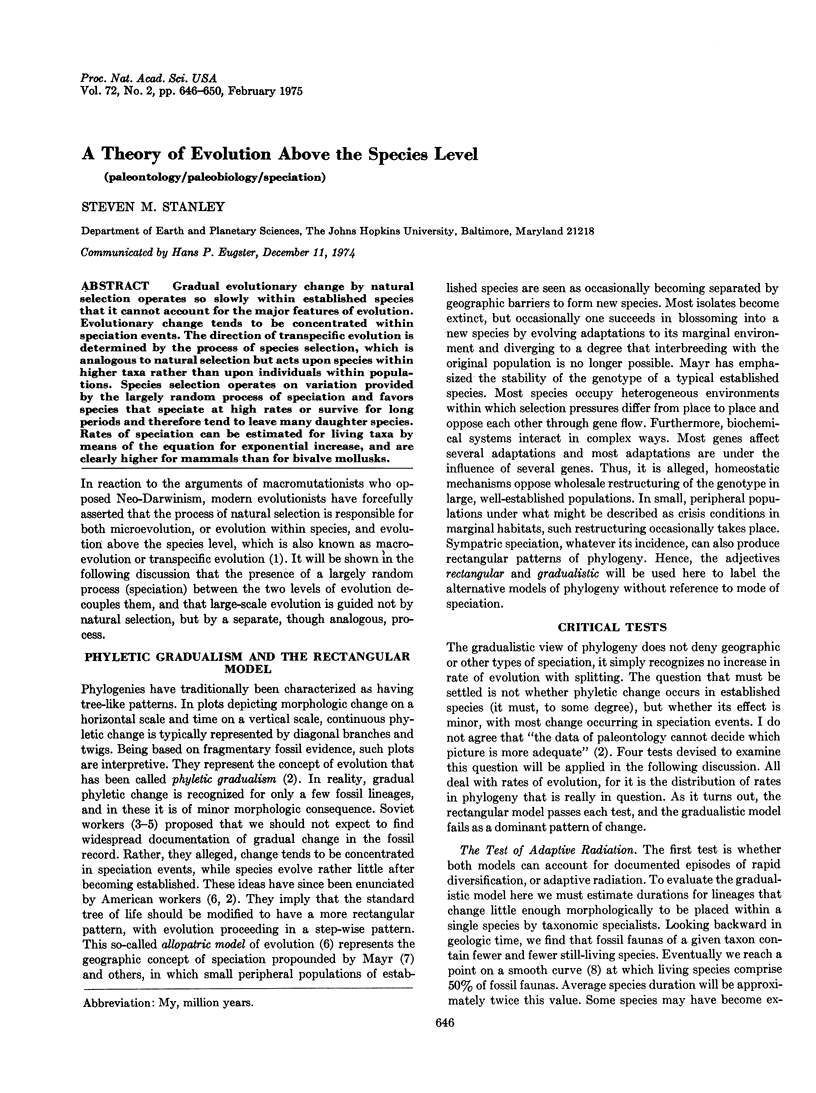
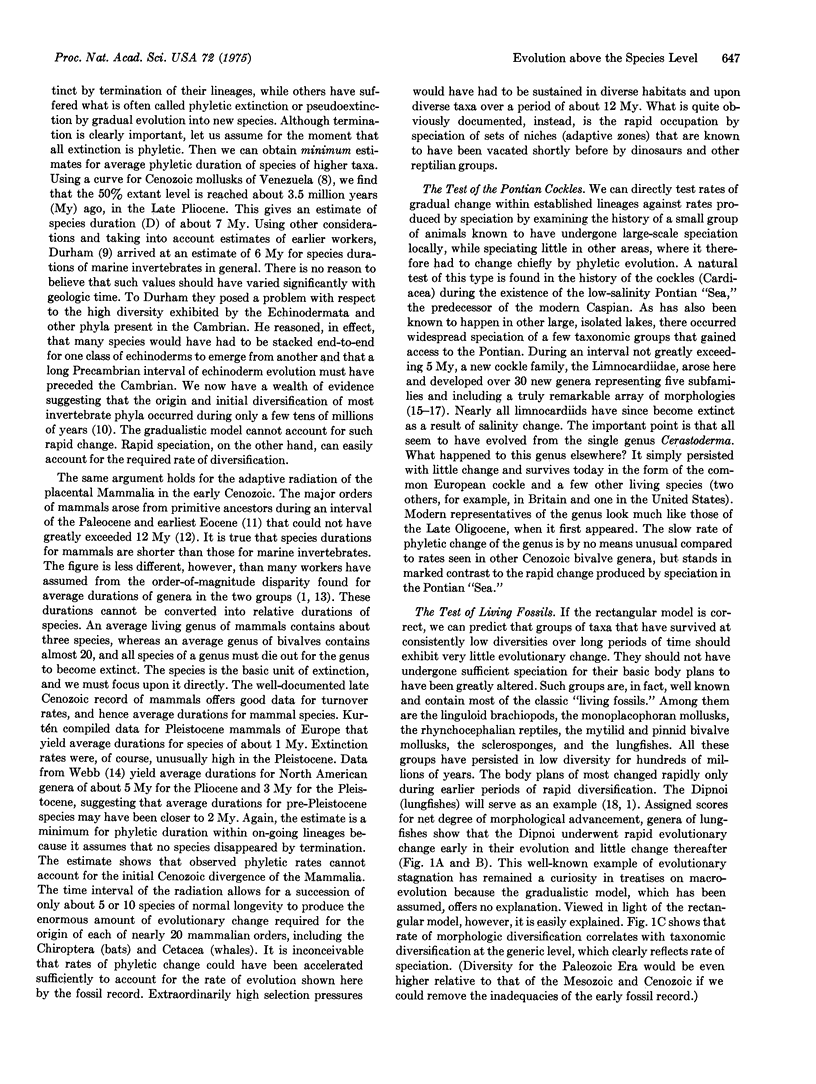
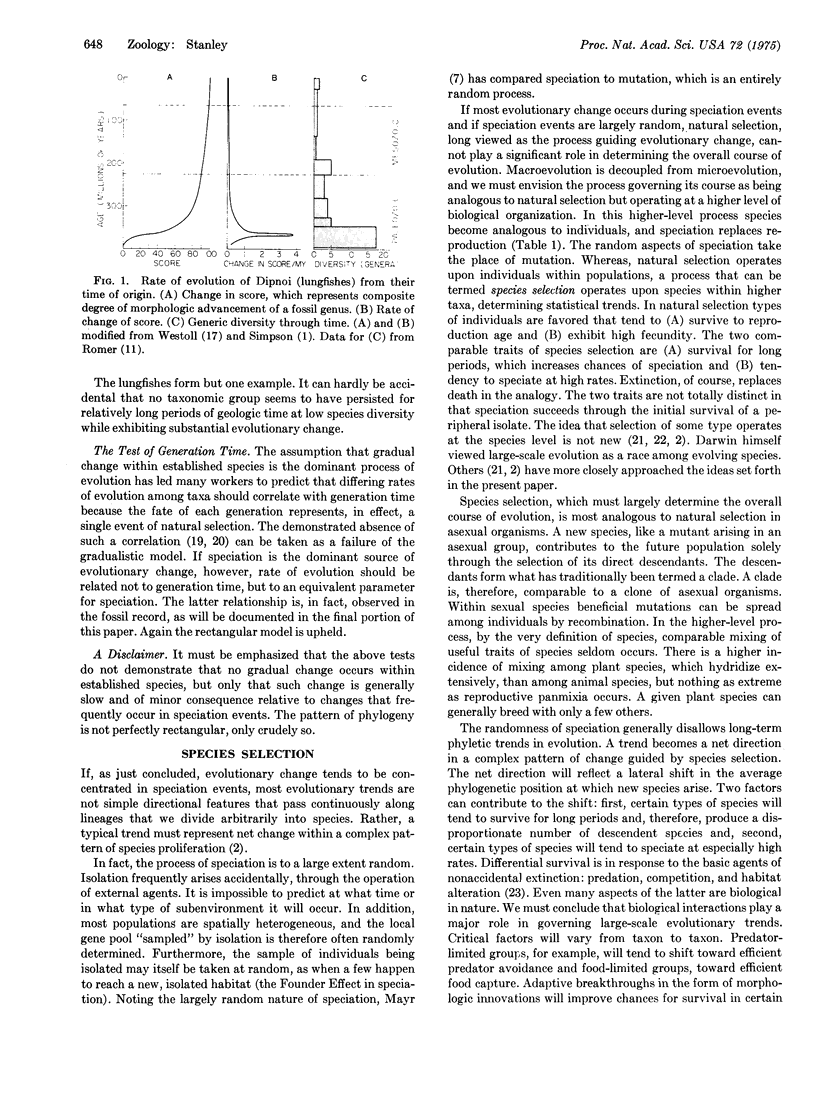
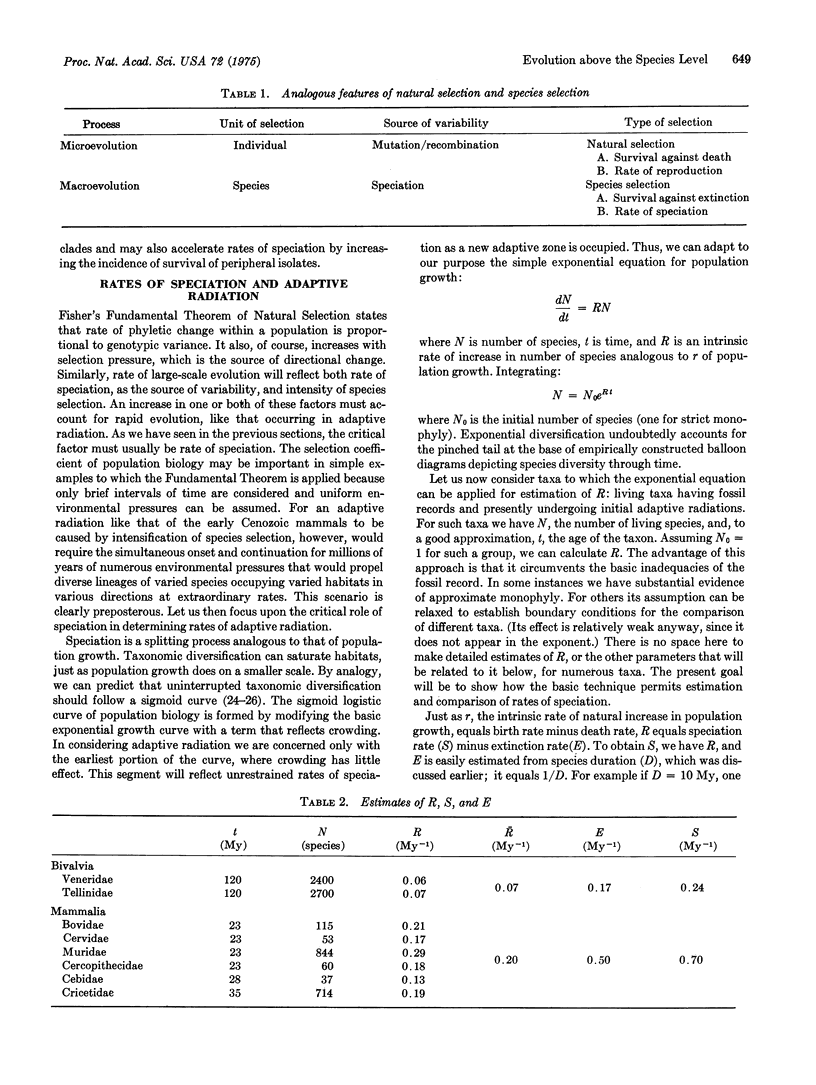
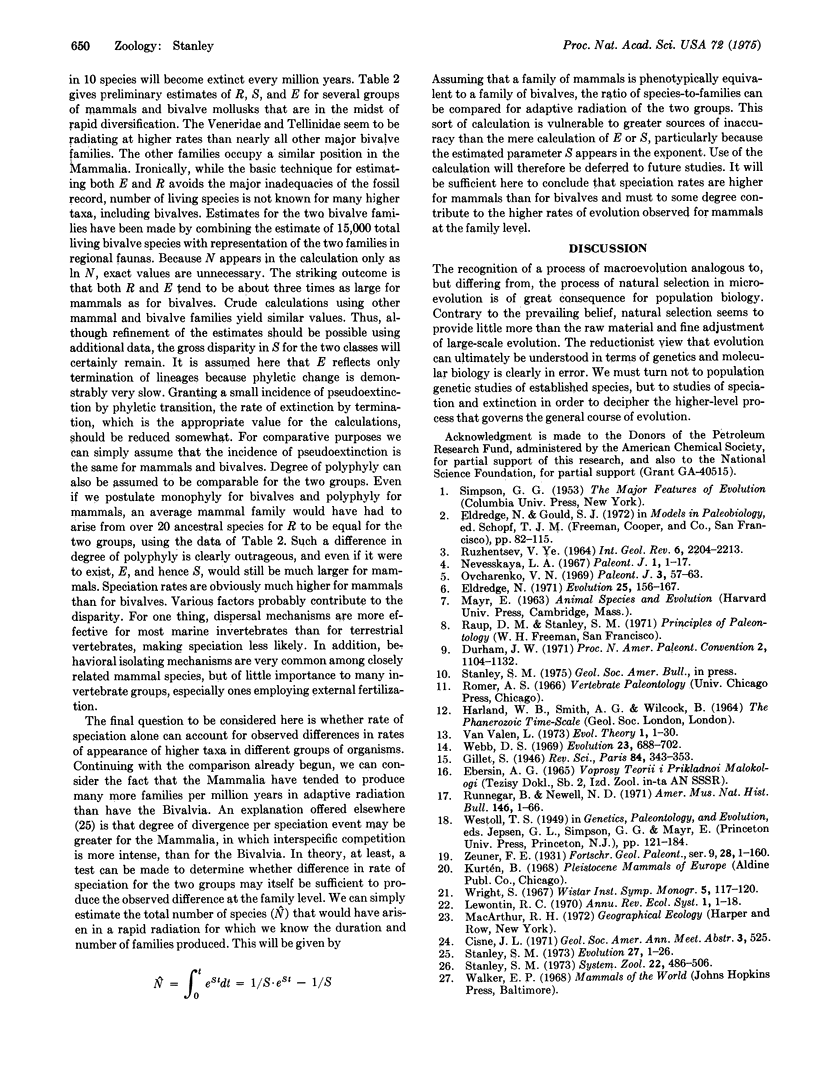
Images in this article
Selected References
These references are in PubMed. This may not be the complete list of references from this article.
- Wright S. Comments on the preliminary working papers of Eden and Waddington. Wistar Inst Symp Monogr. 1967;5:117–120. [PubMed] [Google Scholar]



